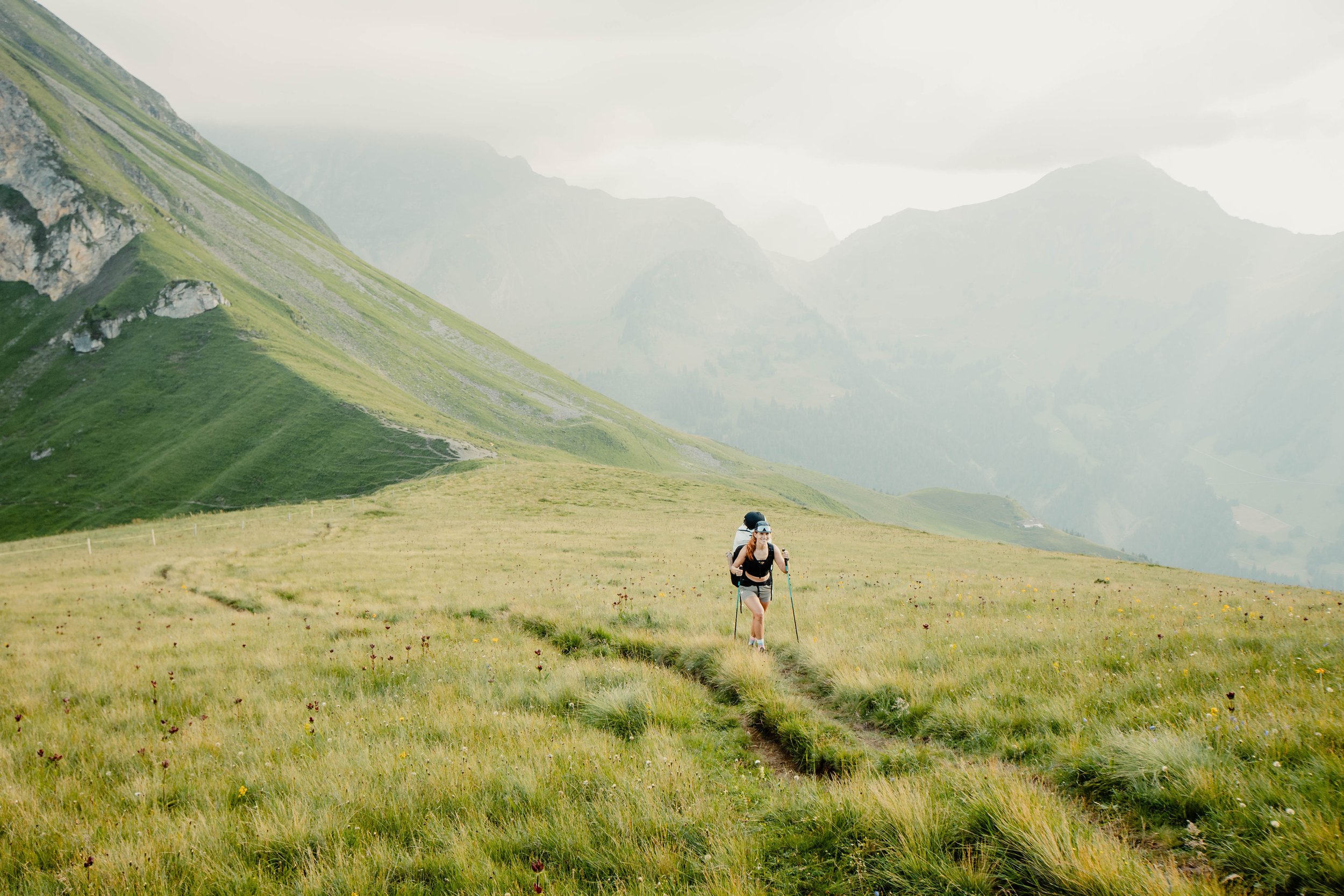A couple of weeks ago, a friend suggested going camping on a summit near where we live to celebrate his birthday.
The plan was simple: take a good hike up to Ballëhöchst, sleep at the top, and then paraglide down the next morning.
For me, these kinds of adventures are the best opportunities to explore new places and take photos while documenting a beautiful day with friends in the mountains.
If you've ever gone camping or bivouacking in the mountains, you know that the weight of the gear you carry is something you have to be careful with. The same hike, with a 5 kg backpack or a 15 kg one, can go from being enjoyable to a damn eternal hell.
If you add professional photography equipment to that, no matter how light you try to go, you’re adding an extra 2 to 3 kilos.
Lately, I’ve been experimenting a lot with what to bring and what not to bring on these kinds of trips because, with the paraglider, ending up with a 20 kg backpack is pretty easy.
My most commonly used setup is a 16-35 mm lens, my Canon mirrorless camera, and a 50 mm lens. The 16-35 mm is not a small lens, and it’s also heavy, but I’ve found that it gives me a lot of versatility to capture what I want while we’re on the move or in the air during these adventures. The 50 mm, on the other hand, is my go-to lens for moments of calm and observation, portraits, and details once we stop.
That’s the photography part.
For sleeping, if we’re in pairs, the ideal is to divide the gear and food between the two of us. On this occasion, I had to carry all my stuff, so I opted for my lightest and most practical setup.
The tent with just the inner layer (lighting a candle to the Virgin Mary, hoping it wouldn’t rain), a 0-degree sleeping bag, an inflatable sleeping pad, and the Jetboil for cooking some noodles that are ready in 3 minutes.
But, being the good country boy that I am, a loaf of bread, a wedge of cheese, and 2 or 3 extra "just in case" items tipped the scale back towards the heavier side.
If the hike is going to be an eternal hell, there better be cheese at the end, right?
Back to photography—one very important thing in this kind of documentary mountain photography is being able to have a global vision of where you are, the weather, and how the light will be moving as the route progresses.
For me, these points are key to knowing when it’s worth getting ahead of the group and when it’s better to save energy and let the adventure unfold naturally.
This kind of photography is a beautiful game of guessing and technique that, in my view, can offer you a lot in other types of sessions. It teaches you to stay alert, be very observant, and know your gear inside out and how to get the most out of it.
I hope your next outing brings you many lessons like these and beautiful photos.




























